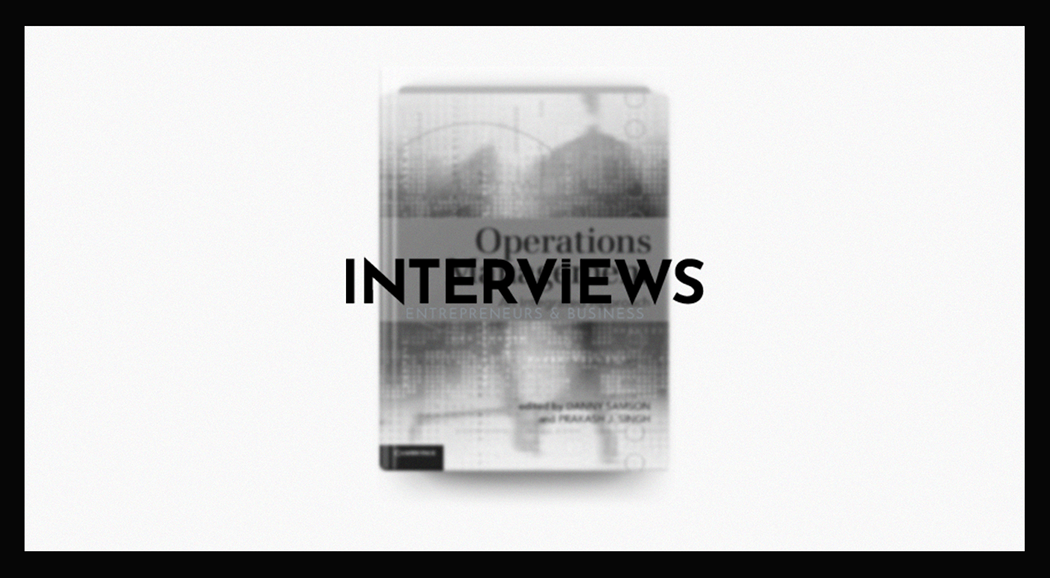So, you’re diving into Operations Management? Strap in. This is the backbone of how things operate. It’s like an orchestra conductor, ensuring all parts—people, processes, technology—work in harmony to create profit.
Essential Reads for Operations Insight
Want to excel in Operations? Ditch Netflix and pick up a book. Some texts are invaluable for learning how to streamline operations. Here are some great suggestions:
- “The Checklist Manifesto” by Atul Gawande: Think checklists are just for pilots? This book shows everyone, including experts, needs them to enhance performance and reduce mistakes. It’s about being consistently excellent.
- “Strategy and the Fat Smoker” by David Maister: Operations involves strategy. A metaphor for business choices, it offers deep insights into service firms that apply everywhere.
- “The New Gold Standard” by Joseph Michelli: Curious how Ritz-Carlton achieves amazing service? This book reveals their operational secrets. You may feel inspired and learn to elevate your own service.
- “The Five Dysfunctions of a Team” by Patrick Lencioni: Teams drive operations. Lencioni outlines the common traps that cause team dysfunction. The main issue often boils down to lack of trust.
- “Extreme Ownership” by Jocko Willink and Leif Babin: Navy SEALs know high-stakes operations. This book translates their leadership lessons to the business world, emphasizing accountability and discipline.
Understanding Operations Management: Key Concepts
Operations Management is multifunctional. Let’s uncover vital concepts every aspiring operations leader should master.
The Power of P’s: Frameworks to Know
The ‘P’ is crucial in Operations Management. Who knew?
- The 5 P’s of Operations Management: These are your operational guide: Plan, Process, People, Possessions, and Profits. Get these right for operational success.
- The 3 P’s of Operations Management: Originally, it was People, Process, Product. Still valid, just more straightforward.
- The 4 P’s of Operations Management: An updated version includes People, Performance, Processes, and Projects. A modern twist on the classic.
The 4 V’s: Recognizing Your Operational DNA
What defines your operations? The 4 V’s—Volume, Variety, Variation, and Visibility—embody your company’s essence. Know your V’s and understand your business better.
Four Pillars of Operational Strength
Think of building a structure of efficiency. The pillars are Trust, Talent, Transparency, and Technology. Strong pillars lead to solid operations. Weak pillars mean instability.
The 5 M’s of Management: Classic Approach
A throwback, the 5 M’s—Men, Machines, Methods, Materials, and Money—define key resources in production management. Consider it a foundational framework.
The 3 E’s: The Efficiency Triad
The 3 E’s—Efficiency, Effectiveness, and Economy—are essential in business. Aim for these to be not just busy but proficient in your work.
The 4 M’s of Manufacturing: Basics to Remember
Specific to manufacturing, the 4 M’s—Machines, Manpower, Methods, and Material—are your best practices checklist. Master them for smooth factory operations.
Five Steps to Effective Operational Planning
Planning is critical. Focus on five areas: marketing insight, logistics management, HR, financial limits, and staying ahead. Ignore one, and your plan lacks direction.
Kaizen’s 5S: Streamlining Operations
Kaizen promotes continuous improvement with the 5S methodology: Seiri, Seiton, Seiso, Seiketsu, and Shitsuke. It’s like simplifying your workplace but for processes.
The 6 M’s of Management: Expanding Tools
The 6 M’s—Material, Method, Man, Machine, Money, and Market—broadens the original 5 M’s by including ‘Market.’ Internal focus is essential, but so is selling what you produce.
Four Types of Operations Management
Operations Management includes four main categories: process management, scheduling management, inventory management, and quality control. Master one or all.
7 Functions of an Operations Expert
What does an Operations Manager do? They handle 7 functions: planning, finance, design, quality control, forecasting, strategy, and supply chain management. It’s quite a list!
Your Path in Operations Management Education
Operations Management interests you? Let’s look at the necessary steps.
Your Education Trail: Climbing Up
To become an Operations Manager, you’ll need at least a bachelor’s degree. Fields like management, business administration, or accounting work well. These show logical thinking skills.
Job Demand: Are Operations Roles Available?
Short answer: yes! Operations Managers are in high demand. Companies need efficiency. The field is projected to grow by 5% in upcoming years. Not bad!
Salaries: The Financial Aspects
The median pay for operations managers in 2023 was about $101,280. Good for ensuring smooth operations. Your salary may depend on many factors such as experience and location.
Certifications: Boost Your Profile
To stand out in Operations Management, certifications can help. Key ones include: Certified Operations Manager (COM), Project Management Professional (PMP), and Certified Supply Chain Professional (CSCP). They boost your credibility.
Job Titles: Explore the OP Roles
A range of job titles exist in operations. Common ones include: Operations coordinator, analyst, supervisor, manager, project manager, program manager, engineer, and director. Find one that fits you.
Job Happiness: Are Ops Managers Content?
Operations Managers generally report reasonable satisfaction. Job happiness ratings stand around 3.6/5. Not thrilled but not unhappy either—a fair assessment.
Age Demographics: Who Are They?
The typical Operations Manager is approximately 44 years old. Experience is vital. The workforce composes about 66% men and 34% women. More diversity is needed here.
Work Environment: Stressful Yet Rewarding
The field can be tough. Expect tight deadlines, budgets, and efficiency targets. It’s challenging. Full-time hours often mean shifts from 9-to-5 or 10-to-7. Coffee helps.
Related Methodologies in Operations Management
Operations Management connects with several methodologies.
Understanding Six Sigma: Process Improvement
Six Sigma is a leader in process improvement. It’s data-driven for reducing errors and waste while enhancing efficiency. Think of it as advanced process optimization.
- DMAIC Methodology: At Six Sigma’s core is DMAIC—Define, Measure, Analyze, Improve, and Control. This structured approach improves quality and efficiency.
- approach to fix problems and improve processes.
- Six Sigma Benefits: Why use Six Sigma? It leads to Reduced Defects, Increased Efficiency, Improved Quality, and Cost Reduction. It helps save money while boosting your chances of looking successful.
Organizational Hierarchy: The Command Structure
Where does Operations Management belong in a company?
CEO vs. Operations Manager: Who’s in Charge?
Sure, the CEO (Chief Executive Officer) is on top of the Operations Manager. Think of the CEO as a ship captain. The Operations Manager is key for keeping things running. Both are vital, but in different roles.
VP of Operations: The Reporting Link
The VP of Operations holds substantial influence. They interact with executives and department heads like finance, IT, sales, and HR. Operations Managers might report to them, depending on the company setup. Essentially, the VP of Ops is both a leader and a connector.
Top Role in Operations: The Peak Position
The leading role in operations is often the Director of Operations. This position represents the summit of operations careers. From there, you could move to higher executive roles, but within operations, this is generally the top position.
CIA and Operations? A Strange Topic.
This seems like an odd detour, but “CIA and related topics” appeared in the briefing. Let’s pause this distraction…then head back to the main topic.
Books on the CIA: Reading Suggestions?
There seems to be interest in CIA-related books. Titles such as “The Very Best Men: The Daring Early Years of the CIA,” “The Secret History of the CIA,” and “The OSS and CIA: The History of America’s Intelligence Community during World War II” are mentioned. Interesting reads for the weekend, not ideal for Operations Management meetings.
CIA Reading List: More Thrillers?
The list continues with “The Art of Intelligence: Lessons from a Life in the CIA’s Clandestine Service,” “The Good Spy: The Life and Death of Robert Ames,” and “Class 11: My Story Inside the CIA’s First Post-9/11 Spy Class.” Great stories, but let’s return to supply chains and efficiency.
CIA vs. NSA: The Intelligence Siblings
There’s a question about the dynamic between the CIA and NSA. Briefly, NSA focuses on tech (signals intelligence), while CIA is about human intelligence. They cooperate and compete at times. Next topic…
Languages Needed by the CIA: Speak Spy?
The CIA needs people fluent in languages such as Arabic and Chinese Mandarin. Handy skills for those considering a shift to espionage. If not, stick to project management tools for your operations role.
CIA Agents: Secrets and Lives
It seems that CIA agents maintain their cover stories even from some family. Intense. Operations Management typically requires more openness.
CIA vs. FBI: Who Has More Clout?
The big question: Who wields more power, CIA or FBI? Answer: FBI has more influence over Americans. FBI operates domestically, while CIA works internationally. The FBI might visit you; CIA will not unless it’s a spy film.
So, that CIA diversion was unexpected. Back to the core mission: excelling in Operations Management to help businesses operate efficiently (not like secretive spy groups). Focus on frameworks, literature, and career paths. Become an operations expert! Now, go and optimize!





